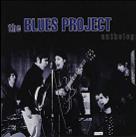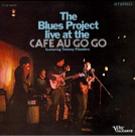
Mick Connolly Lead Guitar
Michael "Mick" Connolly picked up a guitar at the age of 9 and never looked back. A lover of true rock and roll and influenced by classic bands and guitarists like The Rolling Stones, Faces, Jeff Beck, Blood Sweat and Tears, Led Zeppelin, Mike Bloomfield, Larry Carlton and Steve Howe, Mick's playing became as diverse as his record collection. Sought after for not only his playing, but also for his authentic vocal ability and undeniable stage presence, Mick took his talents to his original songwriting and production skills.
As the owner of the Red Room Sound Studio, an all analog, all tape studio in Litchfield Connecticut, Mick is keeping the art of analog recording and production in the forefront with all original equipment from the 1970's heyday and still editing with a razor blade! The Red Room Sound Studio is incredibly busy with clients that have included well known and up-and-coming bands and most recently Steve Katz, founding member of Blood Sweat and Tears and the Blues Project. Having the opportunity to record and co-produce Steve's newest release "The Juggle" was a career highlight as Steve was always a huge musical influence on Mick.
Mick is also well known for his work with National Recording artist Lucinda Rowe in the rock project "Lucinda and Michael" and "The Red Room Project". This rock project has performed with or opened for many well-known artists such as Pat Benatar, Eddie Money, 2015 Rock and Roll Hall of Fame Inductee Ricky Byrd of Joan Jett and The Blackhearts, Patty Smythe and Scandal, REO Speedwagon, Tony Bennett, KC and The Sunshine Band, Stevie Nicks, The Guess Who, The Monkees, The Georgia Satellites, and numerous others. Recent tours have taken them to the Gulf Coast of Florida and Alabama, Key West, Las Vegas, Los Angeles, New York and Boston. Their latest album release "The Red Room Project" is a writing collaboration between Mick and Lucinda showcasing their different styles of songwriting. This album was produced, arranged and recorded by Mick on tape at the Red Room Sound Studio.
Steve Katz Guitar, Vocals
Katz was a guitarist with two successful hybrid-Rock bands of the 1960s, The Blues Project and Blood, Sweat & Tears, and he went on in the 1970s to produce Lou Reed's classic live album, Rock n Roll Animal.
Katz, now 70 and living in Connecticut, played guitar around Greenwich Village at the beginning of the 1960s. He was part of the Village's great Folk revival, learning from Blues elders like Mississippi John Hurt and Son House (whose careers were reenergized by the young Village adherents) and taking guitar lessons from a more contemporary master, Dave Van Ronk (known as "The Mayor of McDougall Street"). Katz also became close friends with Stefan Grossman, a young guitarist with virtuosic talent.
"We wanted to play music together and came up with jug band music as a common denominator," Katz says. "So we started the Even Dozen Jug Band. It had great people."
That's actually an understatement. Besides Katz and Grossman, it also included John Sebastian, future leader of The Lovin' Spoonful, Maria D'Amato (who would find fame after marrying and taking the last name of another jug-band musician, Geoff Muldaur), and David Grisman, on his way to becoming one of the world's finest mandolin players. But the group lasted for just one album, which was released in 1964.
In 1965, Danny Kalb - a Village Folk performer who had taken up electric guitar - was putting together a band that was to combine Roots music traditions with a contemporary Rock sensibility and a fondness for stretching out instrumentally. One of the members of the original quartet was rhythm guitarist Artie Traum, but when he quit to go to Europe Kalb asked Katz if he'd be interested.
"I said I never played electric guitar before but would give it a try," Katz recalls. "So he put a pickup into my acoustic guitar. It was so loud I got feedback and it scared me to death. I turned the volume down at the audition. Danny came over to me and said, 'I like the way you play,' so I got the job. But nobody could hear me."
That group became The Blues Project, which soon gained an important member when Al Kooper - fresh from playing keyboards on Bob Dylan's "Like a Rolling Stone" - joined to play organ. The band got a major-label recording contract and set its sights on success.
"We never thought of having hit singles until toward the end, when we thought if we were ever going to stay together, we needed one," Katz says. "So Al wrote (1967's) 'No Time Like the Right Time'."
It didn't work and Kooper had already left by the time the band played the 1967 Monterey Pop Festival. Katz left soon afterward. The band has remained well regarded and is considered way ahead of its time.
Not long after, Kooper told Katz he wanted to move to England and asked him to play at a fundraising concert at New York's Café au Go Go.
"Enough people showed up for him to get a cab to the airport and back, so I said, 'Lets start a band,' " Katz says. "And that was the beginning of Blood, Sweat & Tears."
This was the most successful but also most controversial phase of Katz's career. Kooper wanted to use horn arrangements, but not just to provide what Katz calls "stock R&B stuff" like the Paul Butterfield Blues Band did. In fact, Kooper had argued with Kalb about adding horns to The Blues Project. Cooper and Katz liked ambitious orchestral arrangements, like those The Beatles were using, that borrowed from Jazz and Classical but still had a Pop sensibility.
"One of our main inspirations was an album by The Buckinghams called Time & Charges,'" Katz says. "It was produced by Jimmy Guercio, who would produce our second album."
With Kooper, Katz and drummer Bobby Colomby as the central figures (and Fred Lipsius and Dick Halligan writing horn charts), BS&T's 1968 album Child Is Father to the Man found a welcome home at nascent FM Rock stations. The inventive arrangements, married with work by such new singer/songwriters as Randy Newman ("Just One Smile"), Harry Nilsson ("Without Her") and Tim Buckley ("Morning Glory"), was something very new.
Kooper also turned out to be a fantastic writer, contributing "I Love You More Than You'll Ever Know," "I Can't Quit Her," "My Days Are Numbered" and "House in the Country." Katz wrote and sang lead in a nice tenor on the ballad "Meagan's Gypsy Eyes."
But the album and its singles never quite became hits. Katz and Colomby decided Kooper's rugged voice was the problem.
"We knew we weren't going to have any hit singles with Al's voice," he says. "So we went to Al and said, 'We'd like you to stay and be a writer, but we need a lead singer.' Al wanted to remain lead singer, so he left. Bobby and I were very happy about it because we were able to audition really good singers."
One candidate was Dick Wagner of a Detroit band called The Frost. He would go on to provide some of the majestic guitar solos on Reed's Rock n Roll Animal. But the winning candidate was Canadian David Clayton-Thomas.
"He was in New York and I saw him at Steve Paul's club The Scene," Katz says. "I was really knocked out by his voice. We asked him to come down and audition."
With Clayton-Thomas' more stylized voice in the forefront, and Guercio taking charge of the production, the second album went four-times Platinum, spawning hits like the Motown cover "You've Made Me So Very Happy," Laura Nyro's "And When I Die" and Clayton-Thomas' own "Spinning Wheel." Katz again contributed a nice ballad, "Sometimes in Winter."
BS&T played Woodstock. While the band was huge, some fans missed Kooper and found the new edition too slick. When it was time for a third album, Colomby opted to co-produce. Guercio moved on to a new horn-heavy band, Chicago. BS&T's popularity declined.
"I stuck by my friend rather than our commercial interests," Katz says. "Bobby took the band with each album afterward more into a Jazz direction and that was the kiss of death right there."
Katz, who had quit BS&T, went on to produce of a sequel live album for Reed, as well as the 1974 studio album Sally Can't Dance. He then joined the band American Flyer, which also featured Cincinnati native Craig Fuller, and took a management job with Mercury Records. That led to him producing an Irish band called Horslips, which in turn led to him discovering Celtic music. In 1988, he became an executive with a small label specializing in it, Green Linnet. Later, he quit to help his wife, a ceramics artist, with her business.
Touring now, doing acoustic shows to promote his book, Katz offers a career review live. There may be a Hurt song, some jug-band tunes that the Even Dozen Jug Band played, some Blues Project and BS&T numbers and more. He'll also tell anecdotes and take questions.
"This has gotten me back to doing music again, on my own with my voice, my acoustic guitar and my memories," Katz says. "At this point in life, I enjoy doing it. I played Woodstock and Monterey. At my age now, the smaller the crowd, the better and happier I am."
Ken Clark: Keyboards and Vocals
Not to be confused with country/bluegrass artist Ken Clark or the late bebop drummer Kenny Clarke, the Ken Clark profiled in this bio is a jazz-oriented organist who is also comfortable playing R&B, funk, and blues. The Boston resident (who plays electric keyboards and acoustic piano as secondary instruments) isn't the type of organist who is content to emulate Jimmy Smith's seminal '50s and '60s recordings -- Smith is an influence on Clark, but so are Larry Young, John Medeski (of Medeski, Martin & Wood fame), and Charles Earland. Clark's playing sometimes brings to mind German organist Barbara Dennerlein, although she isn't necessarily an influence -- rather, it's probably a case of Dennerlein and Clark having mutual influences.
Eternal FunkClark isn't a native Bostonian; he was born in New York City in the late '60s and grew up in the Big Apple. But in the mid-'80s, he moved to Boston to study jazz with pianist Charlie Banacos and guitarist Garrison Fewell and attend the prestigious Berklee School of Music. Instead of returning to New York after studying with those artists and attending Berklee, Clark opted to remain in Boston and became a fixture on the city's music scene. In 1992, he formed the Ken Clark Organ Trio, employing Mike Mele (whom he knew from Berklee) on guitar -- and 11 years later, the group was still together. Clark's group has used different drummers over the years; in 2003, Steve Chaggaris (another Berklee alumni) was playing drums for Clark's trio. As a sideman, Clark has backed various female vocalists, including Fatwall Jack and swing/jump blues artist Michelle Willson. Clark's albums as a leader include The Ken Clark Organ Trio on Aspire Records and Eternal Funk, which the Severn label released in 2003.
Jesse Williams: Bass
Jesse Williams prides himself on his musical depth AND breadth! He has performed and recorded internationally, including two Grammy Nominated Albums and six W.C. Handy nominated albums. He has played with Jimmy Vivino, Bucky Pizzarelli, Howard Alden, Duke Robillard, Jay McShann, Al Kooper, Jay Giels, John Hammond Jr., Karin Allyson, Harry Allen, Ruth Brown, Aardvark Jazz Orchestra, Johnny A., Maria Muldaur, Johnnie Johnson, Ronnie Earl, Henry Butler, Charles Neville, Julien Kasper Bruce Katz, and many others. He's been a member of touring bands with Duke Robillard, Al Kooper, Johnny A, W.C. Handy All Stars, and others.
Festivals and Venues include: North Sea Jazz, Edmonton Folk, Montreal Jazz, New Orleans Jazz and Heritage, Vancouver Jazz, Byron Bay, Russian River, Boston Globe Jazz and Blues, Preakness, Beantown, Lincoln Center. Beacon Theater, Mountain Stage, Beacon Theater, Lincoln Center. He has appeared on PBS, Sesame St., AMC, National Film Archives, as well as multiple commercial spots. Mr. Williams holds a B.A.in performance from Berklee College of Music.
Jesse teaches at Berklee Col of Music (Victor Wooten BCM bass camp and Five-Week program), Milton Academy, and Phillips Academy. He teaches bass, jazz and contemporary ensembles, and guitar.
Recent projects and current bands include:
Sonya Rae Taylor
Seth Rosenbloom
Al Kooper
Jimmy Vivino
Bobby Keyes
Johnny A.
New Black Eagle Jazz Band
In 1964, Elektra Records produced a compilation album of various artists entitled, The Blues Project, which featured several white musicians from the Greenwich Village area who played acoustic blues music in the style of black musicians. One of the featured artists on the album was a young guitarist named Danny Kalb, who was paid $75 for his two songs. Not long after the album's release, however, Kalb gave up his acoustic guitar for an electric one. The Beatles' arrival in the United States earlier in the year muted the folk and acoustic blues movement that had swept the US in the early 1960s.
Kalb formed the Danny Kalb Quartet in early 1965, with rhythm guitarist Artie Traum, Andy Kulberg on bass and drummer Roy Blumenfeld.[2] When Traum went to Europe during the summer, guitarist Steve Katz (like Kalb, a former pupil of guitarist Dave Van Ronk) joined as first a temporary replacement and then a permanent member. Later in 1965, the group added singer Tommy Flanders and changed its name to the Blues Project, as an allusion to Kalb's first foray on record.
Late in the year, the band auditioned for Columbia Records. During the session for the auditions, producer Tom Wilson hired session musician Al Kooper, who had worked with him on Bob Dylan's "Like a Rolling Stone," to provide piano and organ. Kooper, who had worked with Blumenfeld and Kulberg during sessions for his contribution to the What's Shakin' compilation,[3] was invited to join the group.
While Columbia declined to sign the band, Wilson signed the group to Verve Records. The band began recording their first album live at the Cafe Au Go Go in Greenwich Village over the course of a week in November 1965.[1]
Entitled Live at The Cafe Au Go Go the album was finished with another week of recordings in January 1966. By that time, Flanders had left the band and, as a result, he appeared on only a few of the songs on this album.[1]
The album was a moderate success and the band toured the US to promote it. While in San Francisco, California in April 1966, the Blues Project played at the Fillmore Auditorium to rave reviews. Members of the Grateful Dead who were in attendance were impressed with their performance.(Source: Rock Family Trees - television program)
Returning to New York, the band recorded their second album in the fall of 1966, and it was released in November. Projections contained an eclectic set of songs that ran the gamut from blues, R&B, jazz, psychedelia, and folk-rock.[1] The centerpieces of the album were an 11-and-a-half minute version of Muddy Waters' blues standard "Two Trains Running," and the instrumental "Flute Thing", written by Kooper and featuring Kulberg on flute.
Soon after Projections was completed, however, the band began to fall apart. Kooper left the band in the spring of 1967, and the band completed a third album, Live At Town Hall without him. Despite the name, only one song was recorded live at Town Hall in New York; the other songs were live recordings from other venues, or studio outtakes with overdubbed applause to feign a live sound.[1] One song in the latter category, Kooper's "No Time Like the Right Time," was the band's only charting single.
The Blues Project's last hurrah was at the Monterey International Pop Festival held in Monterey, California, in June 1967. By this time, however, half of the band's original line-up was gone. Katz left soon thereafter, followed by Kalb. Kooper was at the festival in the capacity of "assistant stage manager" to "Chip" Monck.[4] A fourth album, 1968's Planned Obsolescence, featured only Blumenfeld and Kulberg from the original lineup, but was released under the Blues Project name at Verve's insistence. Future recordings by this lineup were released under a new band name, Seatrain.
In 1968, Kooper and Katz joined forces to fulfill a desire of Kooper's to form a rock band with a horn section. The result was Blood, Sweat & Tears. While Kooper led the band on its first album, Child Is Father to the Man, he did not take part in any subsequent releases. Soon after, Kooper, then a producer for Columbia Records, recorded with Bloomfield, Stephen Stills and Harvey Brooks for the album entitled Super Session,[5] before doing several solo albums including one with Shuggie Otis. Katz, on the other hand, remained with the band into the 1970s.
The Blues Project, with a modified line-up, reformed briefly in the early 1970s, releasing three further albums: 1971's Lazarus, 1972's The Blues Project, and 1973's The Original Blues Project Reunion In Central Park (which featured Kooper but not Flanders). These albums did little to excite the public and since then, the group's activity has been confined to a few sporadic reunion concerts, such as when the Blues Project played a fundraising concert at Valley Stream Central High School in New York, promoted by Bruce Blakeman with the proceeds going to the Youth Council and the US Olympic Committee.
In the period between 2001 and 2007, Roy Blumenfeld drummed in the Barry Melton Band (Melton of Country Joe and the Fish fame).[6]


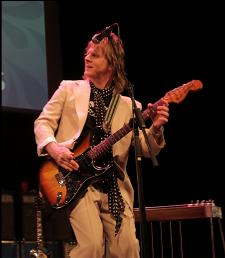
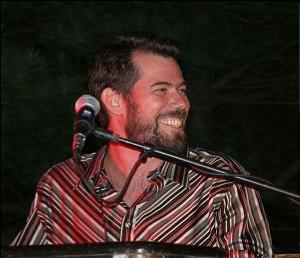
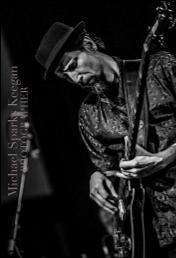
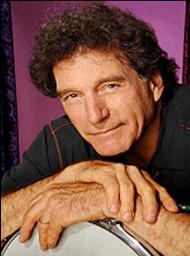

Steve Katz
Roy Blumenfeld
Jesse Williams
Ken Clark
Mick Connolly
Roy Blumenfeld Drums, Vocals
Roy Blumenfeld had a ringside seat from his drum kit on some of the most exciting musical events in New York City during the mid-'60s. Born in the Bronx in 1944, he reached his teens as the first wave of American rock & roll was being created. He took up the drums and found himself drawn to blues, R&B, and jazz. Blumenfeld linked up with bassist Andy Kulberg through work with Al Kooper on the latter's early solo recordings for the Elektra Records sampler What's Shakin'. In 1965, he joined guitarist Danny Kalb in the latter's new band, which, with the addition of Kooper to the lineup, became the Blues Project. Blumenfeld was one of the longest serving members of the renowned group, whose mixture of R&B, blues, jazz, folk, and rock & roll influences made them a major cult band of the '60s, and a huge influences on generations of other musicians. He was there past its end: with Kulberg, he formed Seatrain out of the ruins of the Blues Project in 1968. He played on folk singer Mark Spoelstra's self-titled album for Columbia Records in 1969, and also on the subsequent Blues Project reunions. Blumenfeld worked with Nick Gravenites in the '70s and Robert Hunter at various times in the '80s and '90s, but his most visible gig was with Kooper on the live shows that became Soul of a Man.
Back in the mythic Summer of Love, 1967 -- if you were in New York City, the place to be was MacDougal Street. The club to be in was the Cafe Au Go Go, pedigreed in hipness by Lenny Bruce's famous profanity bust there by the NYPD. The Au Go Go's star band was the Blues Project, a group on the cutting edge of improvisational, classical, blues and jazz. Danny Kalb was the Project's lead guitarist and vocalist; Al Kooper was the keyboardist and vocalist; Steve Katz was its guitarist and vocalist; There was Andy Kulberg on bass and flute. And the drummer -- the heartbeat -- for the group was Roy Blumenfeld.




